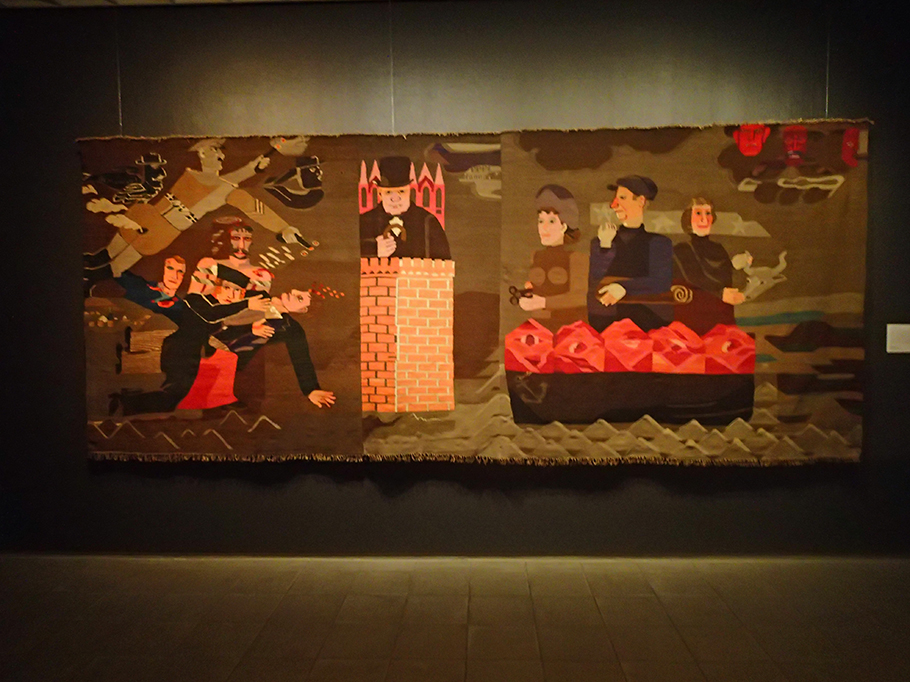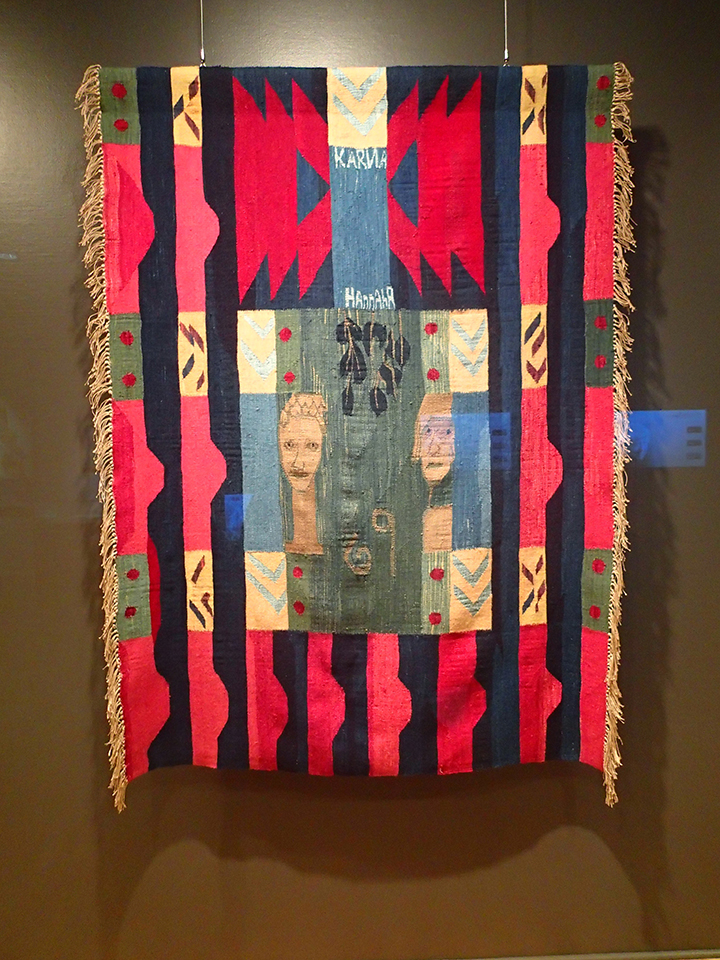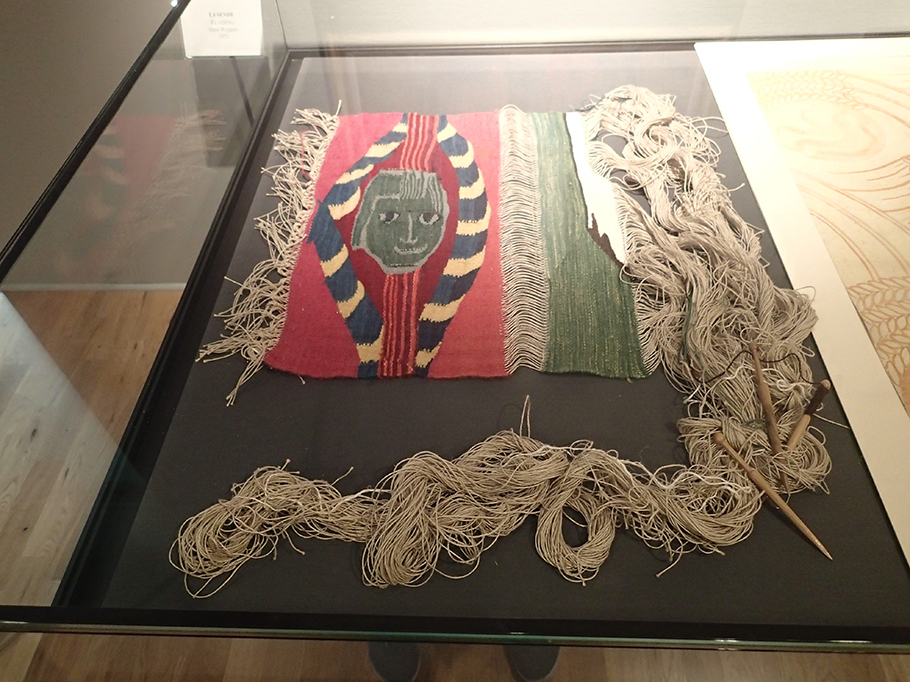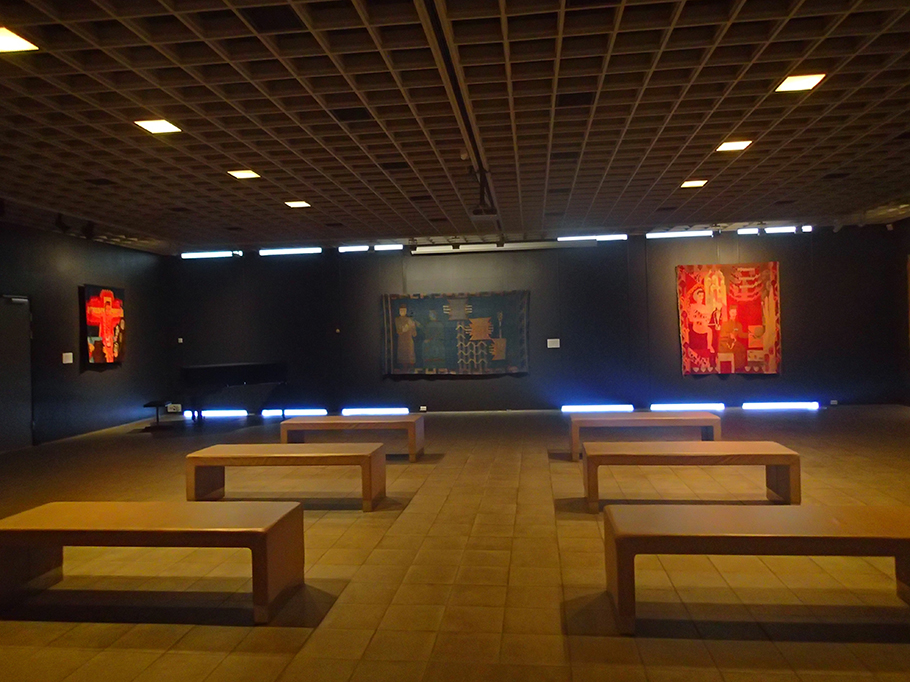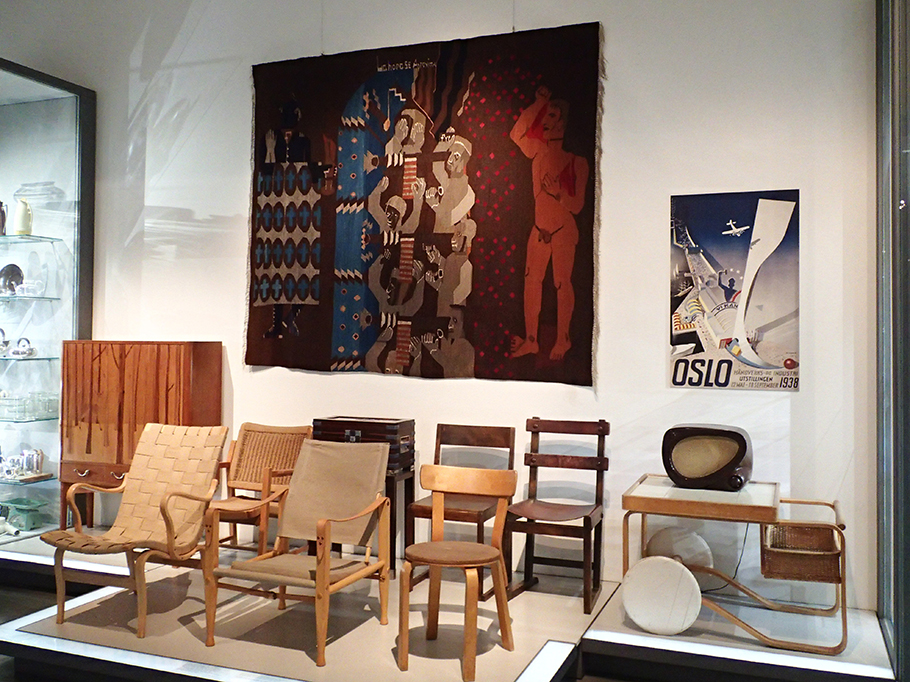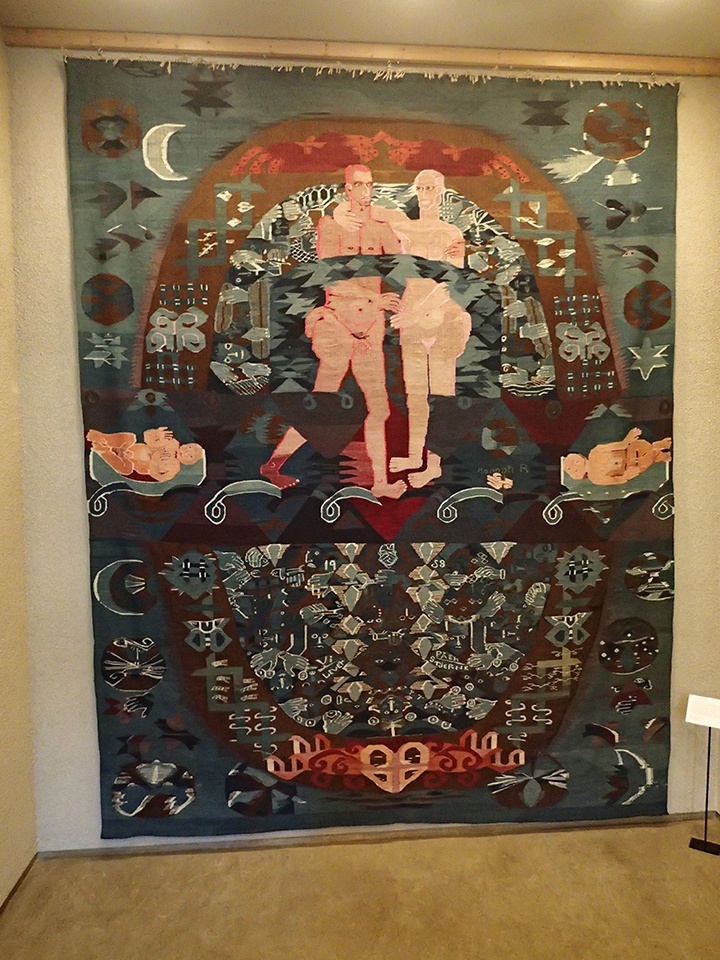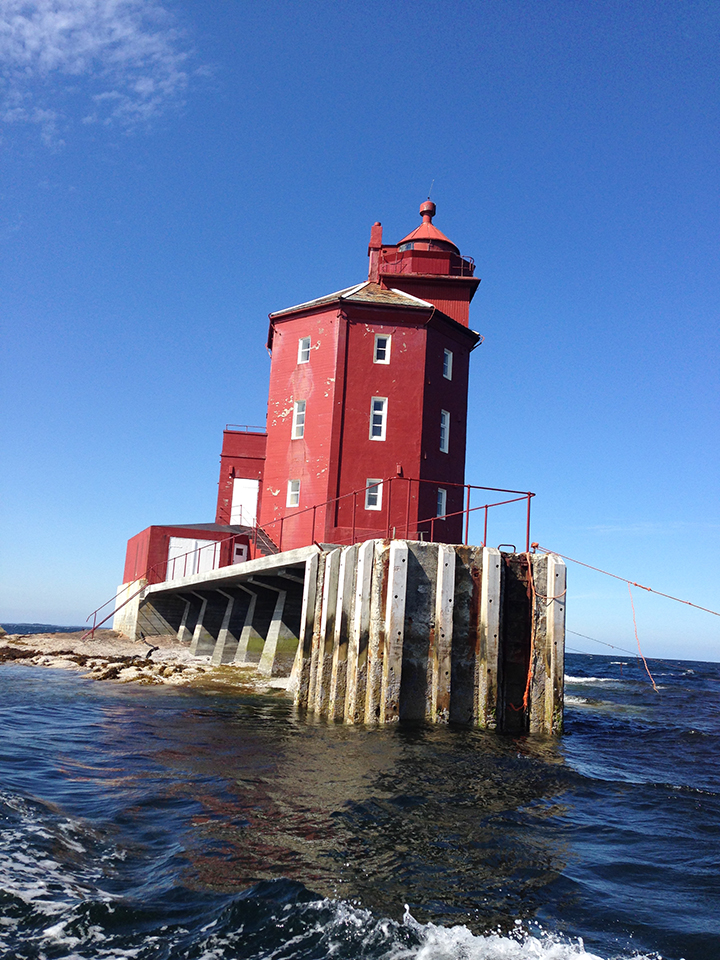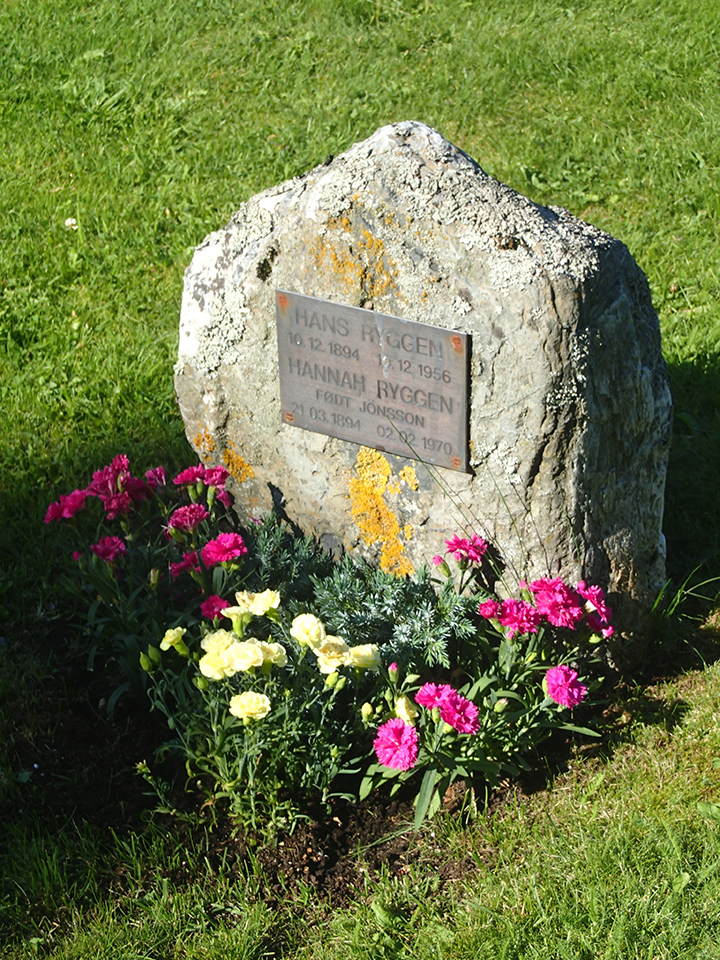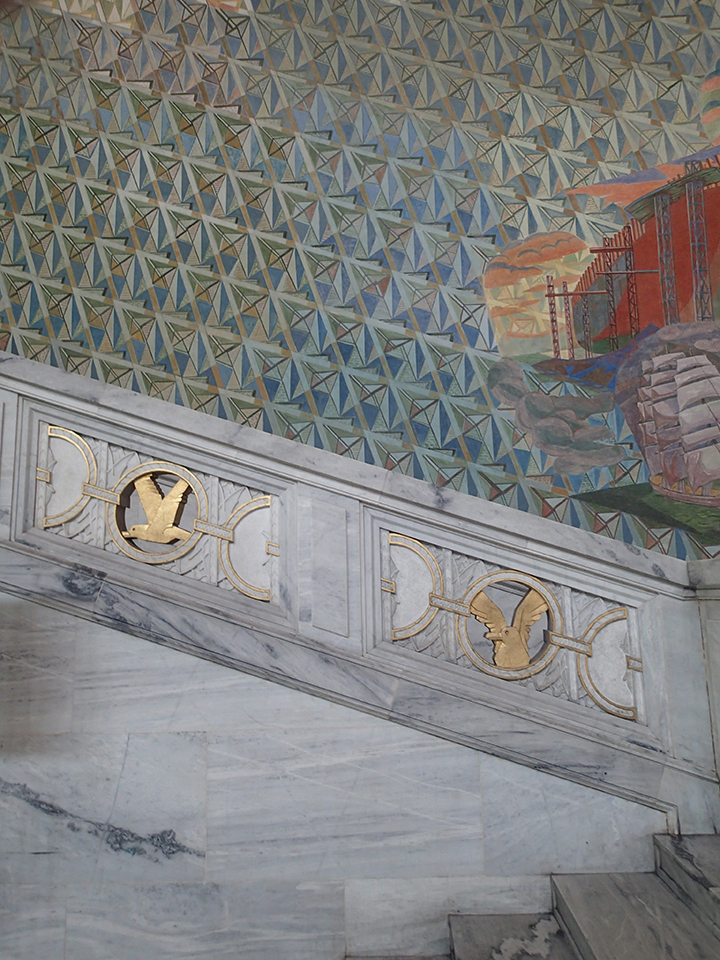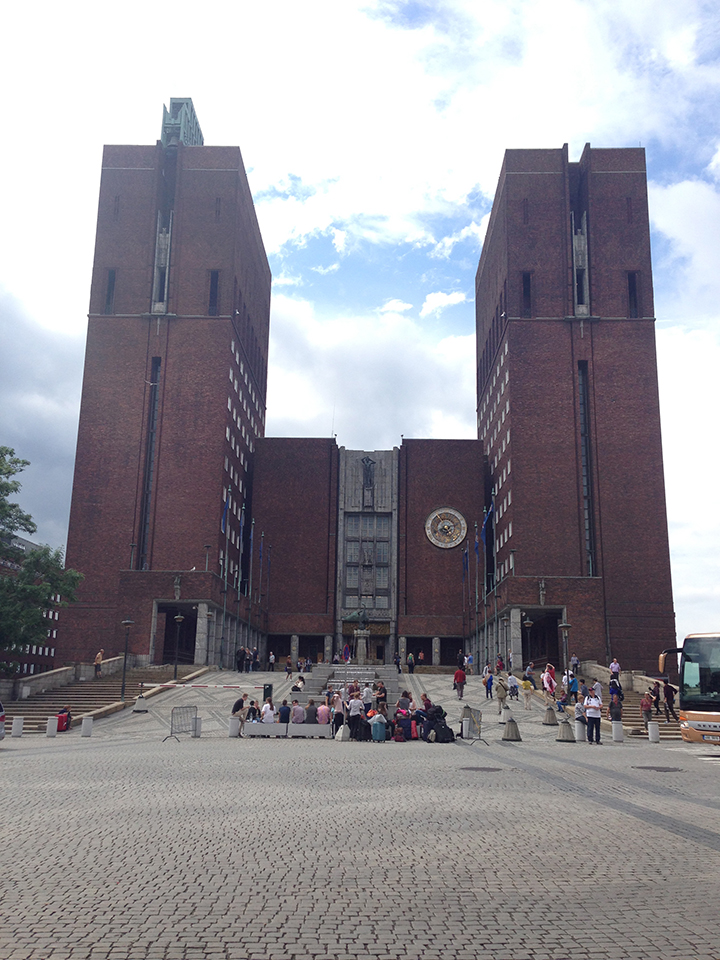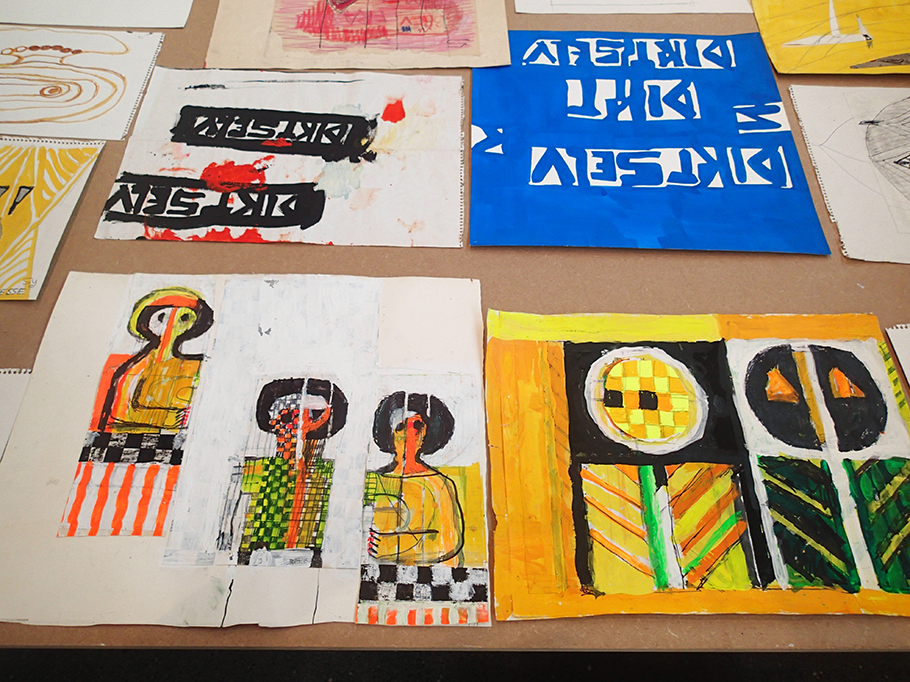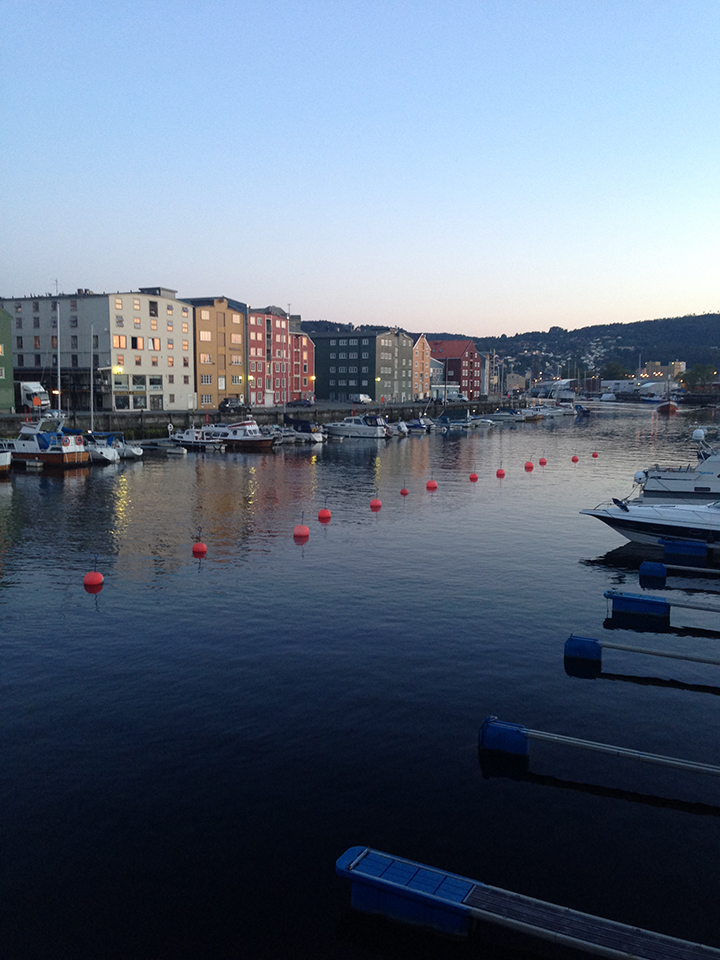Maia Murphy
Grant awarded Spring 2014
I was thrilled to receive a Kossak Fund to support my study of Hannah Ryggen (1894-1970). A Swedish artist who spent most of her life working in Ørland, Norway, Ryggen was a formally trained painter and self-taught weaver who spent four decades creating socially and politically engaged work. Uncompromising in voicing her political and aesthetic opinions, Ryggen’s unique blend of political activism and imaginative expression Ryggen created narrative scenes that chronicled, critiqued and analyzedcontemporary events, particularly the rise of fascism in Scandinavia during World War II.
Through expressive, flattened shapes, her large-scale tapestries, her primary medium, documented geopolitical events as well as issues of domestic labor and personal politics: Lisa Lotte Herrmann (1938) memorializes the German Communist Resistance fighter who had her child taken from her and was executed by the police. We and Our Animals (1934) depicts Rygggen’s family farm, where she spun and dyed her yarn. Beyond the strength of her imagery and the conceptual rigor of her work, Ryggen’s biography is particularly compelling: an active member of the Norwegian Communist party and a dedicated advocate of feminism, she also bravely spoke out against wartime atrocities by hanging her critical tapestries on a laundry line outside her home where they were visible to the Nazi soldiers occupying Ørland. An engaged member of the contemporary art scene throughout her life, Ryggen had a solo exhibition at Moderna Museet in Stockholm in 1962 and represented Norway at the 1964 Venice Biennial. Her work has recently also come to light through two solo exhibitions in Oslo in 2011 and her inclusion in dOCUMENTA (13), and she will be the focus of an upcoming solo show at Oslo’s National Gallery in 2015. Despite this acclaim, her work has shown only once in the US and little information has been available about the artist outside of Scandinavia.
The Kossak Fund allowed me to visit a number of sites in Norway that werecritical to Ryggen during her life or are instrumental in preserving her work. Traveling to Norway also allowed me to meet those whose tremendous efforts are expanding public exposure to Ryggen’s work and deepening the literature surrounding her practice.
In Oslo, I was able to visit the City Hall, where Ryggen was invited to have a studio in 1966. Visiting this location broadened my understanding of the relationship between the Norwegian government and its artists, including the history of commissioning public works for government buildings and creating spaces for artists within government architecture, which are both scenarios Hannah experienced. The Norsk Folkemuseum, which brings together examples of Norwegian architecture and “everyday” interiors from 1500 to the present, was a great resource for imagining the primarily rural conditions in which Ryggen chose to live and work. The University of Oslo and National Museum provided great resources for understanding the artistic context in which Ryggen worked; visiting both expanded my understanding of Scandinavian modernism and the generation of artists who directly followed Ryggen. The Museum of Decorative Arts and Design was the first place I was able to see Ryggen’s work in person. The displays here were particularly useful in illuminating the discourse of arts in relation to craft from a Scandinavian point of view. Similarly, visiting the Resistance Museum was an interesting way to experience WWII from a Norwegian point 2 of view, particularly as Hannah and her husband were deeply involved in the resistance movement.
For the second and final week of my research trip, I traveled north to Ørland, where Ryggen lived for most of her life, and Trondheim, the nearest city. Nordenfjeldske Kunstindustrimuseum in Trondheim has a permanent installation of Ryggen’s works which allowed me, for the first time, to survey a number of pieces that traversed Ryggen’s life. Their holdings included early material explorations and some of her most politically-engaged works including Liselotte Hermann Halshuggen and Grine. Unexpectedly, I was also able to see her monumental tapestry celebrating emancipation and equality i lever på en stjerne (We Are Living on a Star), which I’d believed to still be under conservation. The piece was damaged in a bomb explosion during the 2011 Oslo terrorist attacks executed by a right wing extremist. It had only recently been re-installed,
with a tear intentionally left semi-visible in its corner, as a physical memory of its history. The Gunnerusbiblioteket and the incredibly supportive librarians working there granted me access to a number of rare publications on her work as well as an archive of the artist’s letters and other personal ephemera that were otherwise not available. In Ørland, a one-hour ferry ride from Trondheim, I visited Hans and Hannah’s gravestone at Valgkirke and met the local vicar. He had some faint memories of knowing Hannah and was able to offer some partial illuminations on the local perceptions of her work during her lifetime. The Ørland Kultursenter’s Hannah Ryggen Center and the programs director there, Arve Width, provided crucial support to my research. Here, I was able to see Ryggen’s loom, dozens of her works including her first and last tapestry, and her only extant painting. Width grew up on the farm next to where the Ryggen’s lived and was friendly with members of Hans’ family. He introduced me Reidar Hernes, to Hans’ grandnephew, and his wife, Ann, who live on the farm that had belonged to the Ryggen’s and served as their home and studio. Hernes was a frequent guest to this home as a child, often assisting them in household and some studio tasks. I was able to tour their home, which was largely remodeled since the Ryggen’s time there but did include works by both artists. In the surrounding garden, they pointed out plants Hannah planted that she used either for cooking or making dyes and Reidar recounted memories of times shared with Hannah.
Thank you to Hunter College and the Kossak Fund for underwriting my travel and scholarship. The experience was essential to expanding my understanding of the artistic context in which Hannah Ryggen worked. I was able to see first-hand works and personal materials that are simply not available in the United States and are lacking from dominant art historical resources and narratives. Standing in front her weavings monumental, expressionist tapestries, I was able to consider more deeply Ryggen’s assertion that she was a “painter, not a weaver; a painter whose tool is not the brush, but the loom.” Most significantly, it was my honor to meet some of Hannah Ryggen ‘s friends, family and acquaintances as well as the professionals who are working to expand the dialogue around her work and with whom I’m lucky to remain in contact. My research into this artist and the subsequent thesis I will write would not have been possible without your support.
